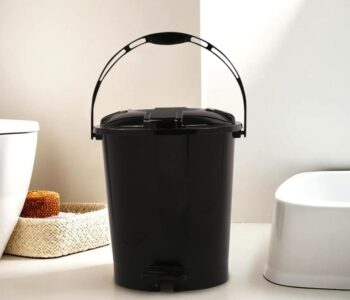 Home Improvement
Home Improvement
Understanding the Unique Qualities of Super White Materials in Construction
- by kristinannie
When it comes to the construction industry, the choice of materials is of paramount importance. It drives the effectiveness, resilience and aesthetic aspect of the construction output. In the realm of aesthetic appeal, one group of materials has persistently stood out – the super white materials. These are renowned for their top-notch quality, stellar whiteness and impressive attributes, making them a primary choice for many constructors and designers. This article aims to dissect the appeal of super white materials, providing a detailed overview of their composition, the influence they’ve had on the building industry, pros and cons, and how they can be effectively utilised in various constructions.
Head-Turning Whiteness: The Unusual Appeal of Super White Materials
The world of design and architecture is becoming increasingly enamoured with the chic, ahead-of-curve appeal of super white materials. The unique aesthetic attraction of these materials is characterized by their sharp contrasting ability, especially in modern minimalist designs. With their spectacular whiteness, they easily stand out, presenting an interesting juxtaposition against other colours in the design palette. Furthermore, super white materials play a significant role in creating a sense of space and light. They have a high reflectivity, leading to a bright and airy ambience that is soothing and expansive.
What are Super White Materials?
The “super white” materials derive their name from their unusually bright white appearance. They are typically made from a collection of materials with high light reflecting abilities. Some of these may include white cement, specific types of paint or plaster, and even certain types of marble or quartz. The characteristic white brightness of these materials is not fleeting and is known for its durability, making these materials not only aesthetically pleasing but also highly practical. As for availability, super white materials can be readily sourced from suppliers with a range dedicated to high-end finishes.
The Influence of Super White Materials on Building Designs
Super white materials have left an indelible mark in the world of architecture and interior design. Architects are increasingly turning to these materials for the creation of iconic structures that resonate with monumental aesthetics. For instance, the Centre Pompidou-Metz, a contemporary art museum in Metz, France, with its awe-inspiring white canopied roof, is a testament to the potential of super white materials. Not only exclusive to the large scale, but these materials have also profoundly tailored interior design trends, offering a clean, crisp backdrop that enhances any design palette.
Why Choose Super White Material? The Pros
There are a plethora of reasons to opt for super white materials in your construction or renovation project. These materials are known for their durability and the ability to withstand weathering and maintain their integrity over time. They offer versatility, being compatible with many different decorating styles and colours. In addition to this, their high reflectivity is beneficial from an energy efficiency perspective. Buildings that utilise super white materials are likely to require less artificial lighting due to the reflectivity offering natural brightness.
Consideration- The Cons
Despite the many positives, using super white materials also bears some challenges. Being so brightly white, these materials may show dirt more easily – hence may require more rigorous or frequent maintenance routines. There’s also the consideration of cost. Depending on the specific super white material chosen, the material and installation cost could be significant, particularly for larger projects.
Tailoring Super White for Toned-down Aesthetics
Affording your structure a toned-down aesthetic doesn’t mean you have to completely shirk super white materials. These materials can be blended with other colours or materials to create a more subtle but equally captivating effect. For instance, pairing super white with wooden elements or softer colours allows for an ambiance that is both friendly and impressive.
Super White Materials in Action: Case Studies
A fitting example of super white materials in use can be seen in Apple’s iconic stores. Known for their sleek, minimalist design, these spaces utilise super white materials abundantly, from wall surfaces to shop decor. A perfect blend of super white marble flooring combined with glass creates an arena that is airy and inviting. This also proves the practicality of these materials in high traffic areas as Apple stores survive the test of time and maintain a pristine look.
Professional Tips for Using Super White Materials
When embarking on a project involving super white materials, it’s crucial to take some professional tips into consideration. These include selecting the right kind of super white materials depending on the functionality of the space, for instance, more resistant materials for outdoor use. Additionally, harmonizing these materials with other elements of design can create a balanced and captivating aesthetic. And finally, setting up an efficient maintenance routine can ensure that the ‘super’ whiteness survives the test of time.
Conclusion
The potential of super white materials in enhancing both the aesthetics and functionality in construction is undeniably impressive. From providing a modern, minimalist charm to facilitating the creation of ample and well-lit spaces, these materials prove to be a valuable addition to the builder’s arsenal. Despite the associated challenges, the benefits they offer make them worth considering in both design and practical aspects.








